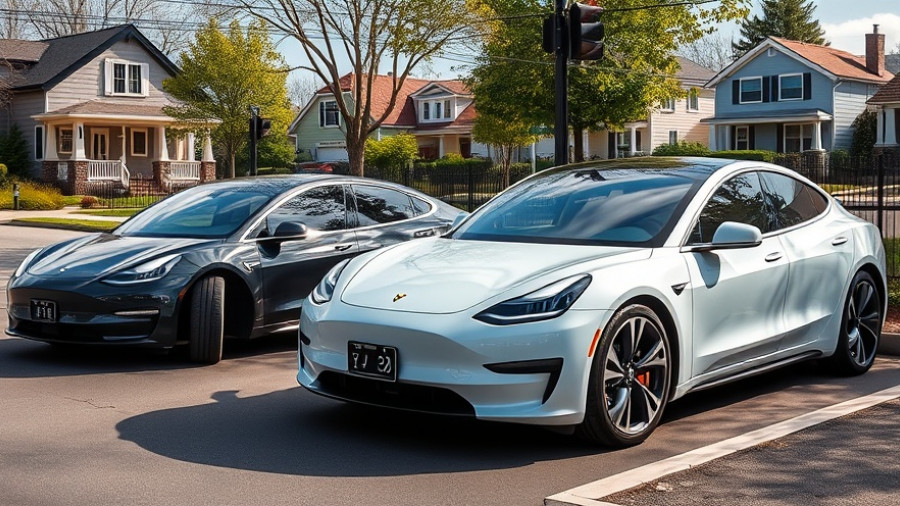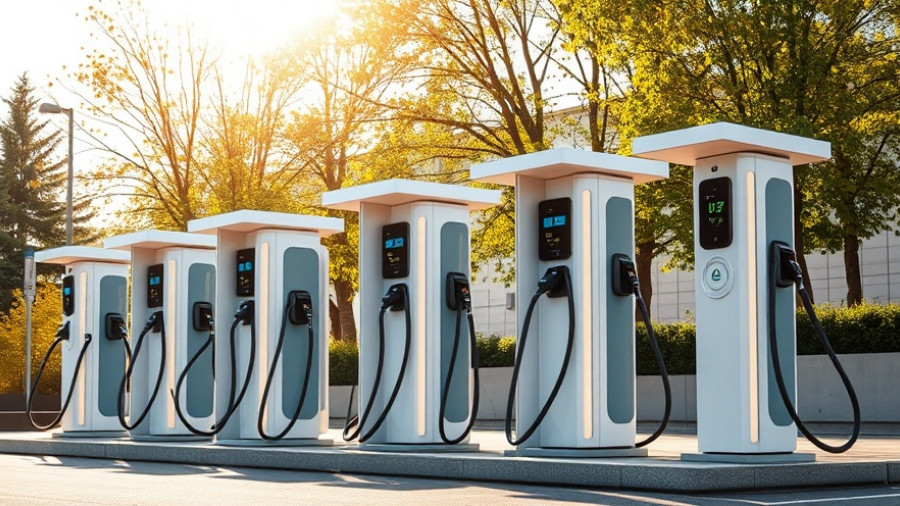
The Rise of Electric Buses in London's Urban Landscape
In a pivotal move towards greener public transportation, Alexander Dennis has successfully delivered 13 of its latest Enviro100EV electric buses to Transport for London, enhancing the fleet on the G1 route that connects Battersea to Streatham. These compact vehicles are specifically engineered to navigate the narrow streets of London while providing zero-emission travel options for residents. With a range of 450 kilometers on a single charge and modern features aimed at maximizing passenger comfort, the Enviro100EV represents a significant step in public transportation innovation.
Innovative Design Meets Urban Efficiency
The built-in technology in these buses showcases British manufacturing prowess, with a focus on functionality and sustainability. The vehicles are equipped with 354 kWh batteries provided by Impact Clean Power Technology and utilize Voith’s efficient electric drivetrains. Optimized for urban environments, each bus measures just 8.5 meters in length and 2.35 meters in width, making them ideal for maneuvering through tight city spaces without compromising on passenger capacity. According to Paul Hennigan, the Fleet and Facilities Director for Transport UK London Bus, the feedback from passengers and colleagues has been overwhelmingly positive, confirming that the buses are meeting the needs of modern commuters.
Community Response and Environmental Impact
Local residents can expect not only a modernized commuting experience but also a tangible reduction in pollution levels as these electric buses begin replacing fossil fuel-driven alternatives. Lorna Murphy, Director of Buses at Transport for London, reinforces this sentiment, stating that these vehicles are pivotal to London's wider initiative to green the entire bus network. By incorporating more electric buses, Transport for London aims to enhance air quality and demonstrate the commitment towards sustainable urban living.
The Future of Electric Public Transport
The introduction of the Enviro100EV buses presents a broader narrative about the electrification of public transport. As cities worldwide grapple with the challenges of climate change and urban congestion, the demand for green public transit solutions will only increase. Electric buses not only fulfill environmental objectives but also offer long-term financial benefits by reducing operational costs associated with traditional diesel engines. Reports from various transport sectors indicate that electrification is set to revolutionize public transportation, providing cleaner, quieter, and more efficient alternatives.
Understanding the Broader Trends in Green Energy
The significance of this transition goes beyond enhancing local public transport. It aligns with a larger trend towards sustainable energy solutions, such as solar power integration in electric vehicle charging systems. Homeowners and businesses considering investments in solar energy can now see an increasing synergy between personal green energy solutions and public transport systems. This interconnectedness also raises awareness of the growing trend of renewable energy innovations, such as smart grids and decentralized energy systems that empower communities towards greater energy independence.
Actionable Insights for Homeowners and Businesses
For those interested in harnessing the benefits of solar energy and electric vehicles, the launch of the Enviro100EV buses serves as a compelling case study on the viability of sustainable technology. Homeowners can explore solar-powered charging options to fully capitalize on the convenience of electric vehicle ownership. Furthermore, businesses could consider integrating electric transport solutions as part of their environmental commitments to reduce carbon footprints. Investing in renewable energy not only supports global sustainability efforts but also positions homeowners and businesses favorably in an increasingly eco-conscious marketplace.
The advancements brought by electric public transport, epitomized by the new Enviro100EV buses, signal an inventive future where transportation and sustainable energy coexist harmoniously, shaping the way cities approach mobility and environmental stewardship.
 Add Row
Add Row  Add
Add 



Write A Comment